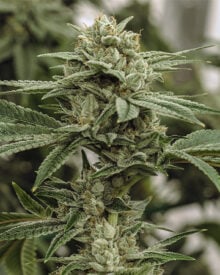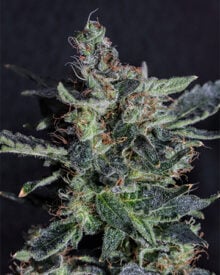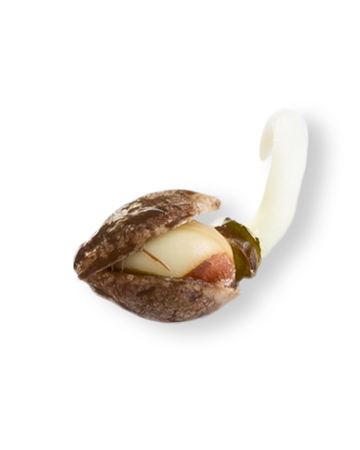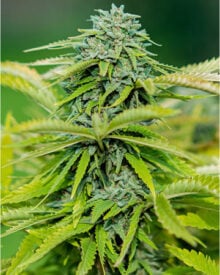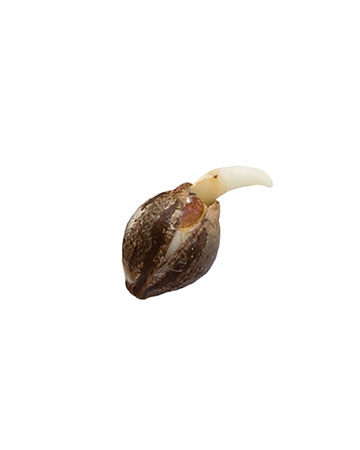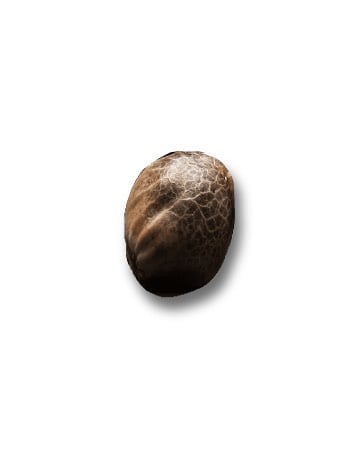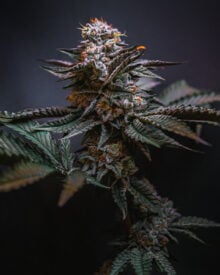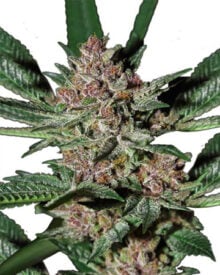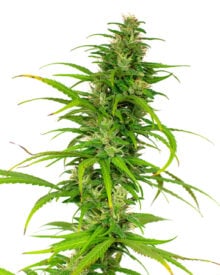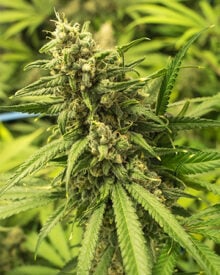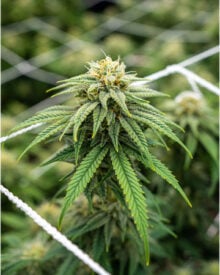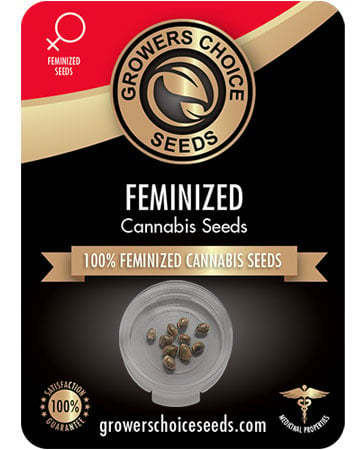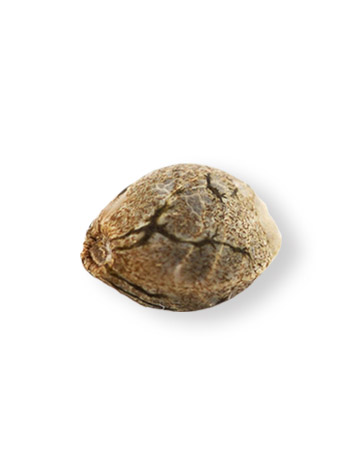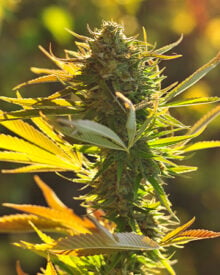Wisconsin has yet to legalize cannabis for recreational use, and medical marijuana laws remain restrictive. The cannabis market maturity is low in Wisconsin. Despite these limitations, growers who prepare for eventual legalization will be ahead of the curve. We at Growers Choice Seeds believe that selecting high-quality genetics will make a difference when legal options become available. This guide provides insights into Wisconsin’s cannabis climate, strain selection, and cultivation strategies. Whether legalization happens soon or takes time, staying informed will help growers be ready.
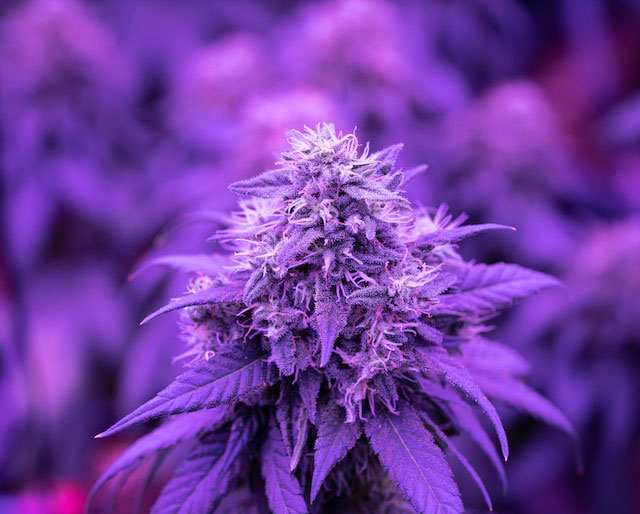
Source: CRYSTALWEED cannabis unsplash
The Legal Landscape of Cannabis in Wisconsin
Cannabis remains illegal for recreational use in Wisconsin. Medical marijuana is available only in limited forms, such as CBD oil with physician approval. Efforts to change these laws continue, but legislative progress has been slow.
Home cultivation is prohibited, and penalties for growing cannabis are severe. Even small-scale cultivation can result in felony charges. Those looking to grow will need to wait for legislative updates.
Despite these restrictions, support for legalization has grown. Neighboring states like Illinois and Michigan have created legal markets, putting pressure on Wisconsin lawmakers. Advocacy groups continue to push for reform, and future policy changes remain a possibility.
Understanding Wisconsin’s Growing Conditions
Wisconsin has a short summer and cold winters, making outdoor cannabis cultivation challenging. The growing season runs from late May to early October, giving outdoor growers limited time. Strains must be chosen carefully to avoid early frosts.
Spring often brings heavy rainfall, which can lead to root rot if soil drainage is poor. Summer provides warm temperatures, but humidity levels can rise, increasing the risk of mold and mildew. The fall season introduces rapid temperature drops, making early harvesting a necessity.
Different regions of Wisconsin have slightly varied climates. Southern parts experience milder winters, while northern regions face harsher conditions. Indoor cultivation offers a solution for those looking to grow year-round, allowing full control over the environment.

Source: Indorgro unsplash
Outdoor Growing Strategies for Wisconsin’s Climate
Wisconsin presents unique challenges for outdoor cannabis cultivation. Cold temperatures arrive early, and summers are often too short for slow-growing strains. Careful planning and the right strain selection help growers make the most of the season.
Selecting Cold-Resistant Strains for Short Growing Seasons
Cannabis plants need a strain that matures quickly before Wisconsin’s early frost sets in. Autoflowering strains work well since they transition to flowering based on age rather than light exposure. Some photoperiod strains also finish early, making them suitable for this climate. Fast-growing indica varieties often do better than long-flowering sativas.
Strains with genetics from northern climates tend to withstand temperature fluctuations better. Varieties with dense buds should be avoided unless humidity levels can be controlled, as they are prone to mold in cool, damp conditions.
Managing Frost Risks and Early Freezes
Late spring and early fall bring frost concerns. Young plants are sensitive to sudden drops in temperature, and early freezes can ruin an entire crop. Cold frames, row covers, and temporary greenhouse setups provide an extra layer of protection.
Placing containers on raised platforms helps prevent roots from getting too cold. Mulching around the base of plants retains soil warmth. Some growers use black plastic sheeting to trap heat from the sun during the day, helping plants survive unexpectedly cold nights.
If a sudden frost is predicted, covering plants with breathable fabric overnight prevents ice from settling on leaves. Watering in the late afternoon can also help, as moist soil retains warmth better than dry soil.
Best Planting Times and Seasonal Growth Timelines
Timing matters in a short growing season. Most growers start seeds indoors in early spring and move plants outside after the last frost, typically in late May or early June. Direct seeding outdoors often leads to stunted growth since the soil takes time to warm up.
Harvest usually happens between September and early October, but some autoflowers finish as early as August. Planting multiple rounds of autoflowers throughout the season allows for multiple harvests before winter arrives.

Indoor Cultivation for Year-Round Growing
Indoor growing provides complete control over the environment, allowing plants to thrive regardless of Wisconsin’s weather. While it requires more setup, the reward is a consistent harvest without worrying about early frosts or temperature swings.
Setting Up an Efficient Indoor Grow Space
A well-planned grow room or tent keeps plants healthy while minimizing energy use. Reflective materials on the walls improve light distribution. Air circulation is a priority since stagnant air creates the perfect conditions for mold. Fans should run continuously to keep fresh air moving through the space.
Grow tents are a simple way to maintain the right conditions, especially for beginners. They hold in heat and humidity while allowing for easy light control. Smaller setups need minimal equipment, while larger operations require proper ventilation, carbon filters, and temperature regulation.
Managing Temperature, Humidity, and Ventilation
Consistent temperatures between 70-80°F create the best conditions for growth. Too much heat can stress plants, while cooler temperatures slow down development. Grow lights add warmth, but heaters may be necessary during Wisconsin’s colder months.
Humidity levels change depending on the growth stage. Young plants need more moisture in the air, while flowering plants thrive in drier conditions to prevent mold. A dehumidifier helps maintain the right balance.
Ventilation removes stale air, brings in fresh oxygen, and keeps humidity from getting too high. Inline fans, exhaust systems, and oscillating fans help create a steady flow of air.
Choosing the Right Lights and Soil for Maximum Yield
Lighting affects both growth speed and bud quality. LED lights are energy-efficient and give off less heat, making them ideal for small spaces. HPS lights are powerful but require proper cooling. A light cycle of 18 hours on and 6 hours off keeps plants in the vegetative stage, while switching to 12 hours on and 12 hours off triggers flowering.
Soil choice depends on the grower’s preference. Organic soil with compost and beneficial microbes support healthy root development. Some opt for hydroponic systems that use nutrient solutions instead of soil. Regardless of the method, keeping pH levels between 6.0 and 7.0 ensures the best nutrient absorption.
Selecting the Best Cannabis Strains for Wisconsin
The limited growing season in Wisconsin means selecting fast-maturing strains like Northern Lights and Blue Cheese is important. Autoflowering strains such as AK-47 Auto perform well because they flower based on age rather than light cycles, allowing for multiple harvests within the short summer months.
Indoor growers have more flexibility, allowing for the cultivation of longer-flowering strains like Gelato, Bruce Banner, and Girl Scout Cookies. Controlling temperature, humidity, and light cycles provide consistent results regardless of external weather conditions. Those considering cultivation should research strains suited for both indoor and outdoor setups.

Harvesting, Curing, and Storage
Recognizing the right time to harvest is key to producing high-quality cannabis. Trichomes shift from clear to milky white when plants reach peak potency. Harvesting too early reduces cannabinoid content, while waiting too long can degrade THC.
After harvesting, drying and curing play a major role in preserving flavor and potency. Hanging buds upside down in a dark, well-ventilated space allows moisture to evaporate slowly. Curing in glass jars for several weeks improves smoothness and aroma.
Proper storage prevents degradation over time. Airtight containers in a cool, dark place maintain potency for months. Avoiding exposure to light and heat keeps cannabis fresh and effective for extended periods.
Staying Informed and Preparing for Legalization
Although cannabis cultivation is not yet legal in Wisconsin, staying informed will prepare growers for future changes. Advocacy groups continue to push for reform, and legislation could shift in the coming years. When legal options become available, those looking to buy cannabis seeds in Wisconsin should seek high-quality genetics. At Growers Choice Seeds we are committed to providing top-tier strains suited for different climates. Keeping up with legal updates ensures growers are ready when laws change.
Most Popular Cannabis Strains
-
Pineapple Kush Auto $44THC 17%indicaeasy


-
Biscotti $49THC 25%indicaintermediate
 peoples choice
peoples choice
-
Pineapple Chunk $50THC 26%indicaeasy


-
Platinum Kush strain $50THC 17%indicaeasy


-
Dark Star $50THC 19%indicaintermediate


-
Stinky Pink Now$29.2541% offTHC 27%indicaintermediate


$49You save $19.75 -
DJ Short Blueberry $50THC 22%indicaintermediate


-
Cali Kush $49THC 24%indicaeasy


-
Cherry Runtz $46THC 17%balanced hybridintermediate


-
Blue Dream seeds $45THC 26%sativaeasy


-
Birthday Cake Kush $47THC 25%balanced hybridintermediate


-
Platinum Bubba Kush Auto $50THC 25%indicaeasy




